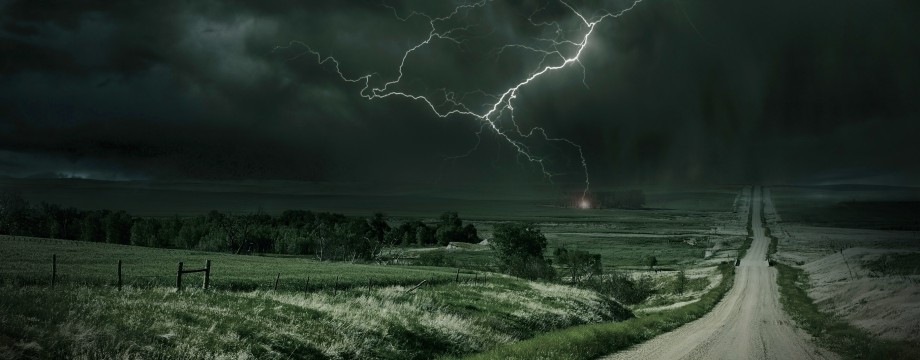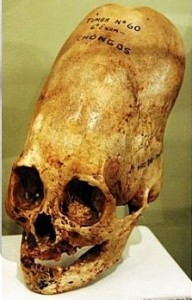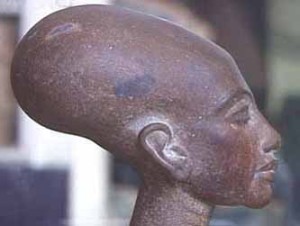In this day and age, when we look at history we hear great stories of the Greeks and Romans and their might, their political power, their military feats, their technological innovations, and their religious heritage. Likewise, their myths and legends are not only the topic of studies in schools and universities, but popular backdrops and plot devices in movies and books as well. From 2004’s Troy, starring Brad Pitt and Orlando Bloom to The Hunger Games, it appears that these stories are timeless in their ability to stimulate the imagination of audiences around the world. But are they just stories? Might there be some element of truth within them? Such is a key theory of some scholars and students of the history of the Nephilim – a theory that is not without some intriguing evidence. And, no, I’m not talking about the fake giant skeletons that one sees all over the internet. These are akin to faked UFO photos – there may be something real in the mix who knows what to believe?
No, the evidence I’m talking about things such as the Pyramids and other megalithic structures throughout the world that people theorize about but really don’t know about how they were built – stone carvings and statues showing other-than-human looking beings; elongated skulls in Peru and elsewhere, some possibly not caused by cradle-boarding, but born that way (also born lacking a sagittal suture), cultures trying to emulate that physical attribute, stories, not just from the Bible but from other cultures indicating a time where there were beings that roamed the earth that were revered by some and feared by many. All of these point to the old adage – where there’s smoke, there’s fire.
That fire, I believe, is found in the ancient nephilim – the demigods of old – who being part human were at first powerful and awe-striking in their appearance – and whose presence and genetic boundary breaking spurred many fictional accounts based upon these beings who still played a role in humanity’s collective memory.
Since our main source for any truth will be and must be the Holy Bible, I’m not going to veer too much into extra-biblical texts; but, I think it would be a mistake just to dismiss them wholly. For instance, the Book of Enoch was clearly read by our ancient Christian ancestors. Large portions of it were found amongst the Dead Sea scrolls and pre-date the birth of Christ; so, they weren’t something just made up out of nowhere during the middle ages. They are not a fraud. They are also, however, not scripture and the ancient Rabbis and early Christians kept them out of the Scriptural canon for a reason. So, in studying the book of Enoch and books like it, we can look at them like other books, such as the Apocrypha, containing useful material but not Scripture.
In the book of Enoch, you see the story of the angels who fell told in great detail.
It starts out with a text that appears highly biblical:
The words of the blessing of Enoch, wherewith he blessed the elect and righteous, who will be living in the day of tribulation, when all the wicked and godless are to be removed. And he took up his parable and said -Enoch a righteous man, whose eyes were opened by God, saw the vision of the Holy One in the heavens, which the angels showed me, and from them I heard everything, and from them I understood as I saw, but not for this generation, but for a remote one which is for to come. Concerning the elect I said, and took up my parable concerning them:
The Holy Great One will come forth from His dwelling,
And the eternal God will tread upon the earth, (even) on Mount Sinai,
[And appear from His camp]
And appear in the strength of His might from the heaven of heavens.
And all shall be smitten with fear
And the Watchers shall quake,
And great fear and trembling shall seize them unto the ends of the earth.
And the high mountains shall be shaken,
And the high hills shall be made low,
And shall melt like wax before the flame
And the earth shall be wholly rent in sunder,
And all that is upon the earth shall perish,
And there shall be a judgement upon all (men).
But with the righteous He will make peace.
And will protect the elect,
And mercy shall be upon them.
And they shall all belong to God,
And they shall be prospered,
And they shall all be blessed.
And He will help them all,
And light shall appear unto them,
And He will make peace with them’.
And behold! He cometh with ten thousands of His holy ones
To execute judgement upon all,
And to destroy all the ungodly:
And to convict all flesh
Of all the works of their ungodliness which they have ungodly committed,
And of all the hard things which ungodly sinners have spoken against Him.
Note a couple of things. The author of the book of Enoch first notes that this vision is being told in a parable to those in the last days. So, while many of the facts may be true; the work itself is a fictional attempt to depict what happened and what will happen. It is a parable which also (imperfectly) tries to tell great truth.
Second, the passage we just quoted from is also quoted from in Jude 14-15:
14 And Enoch also, the seventh from Adam, prophesied of these, saying, Behold, the Lord cometh with ten thousands of his saints,
15 To execute judgment upon all, and to convince all that are ungodly among them of all their ungodly deeds which they have ungodly committed, and of all their hard speeches which ungodly sinners have spoken against him.
In fact, the story of angels who fell is attested to and partially supported in the New Testament by two of Christ’s apostles, Jude and Peter – so we can’t dismiss the book out of hand. Rather, the best approach to Enoch is to read it for what it is, a pseudopigraphal work that has interesting and relevant information in it which must always be bounced against Scripture to determine its authenticity.
This is what we are going to do for the next several posts as we try to figure out what exactly happened in the book of Genesis and how the story of the Nephilim is relevant to our day.



